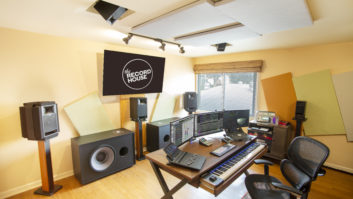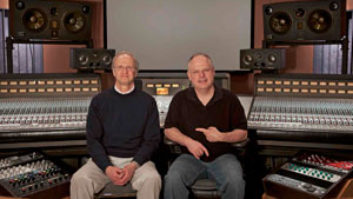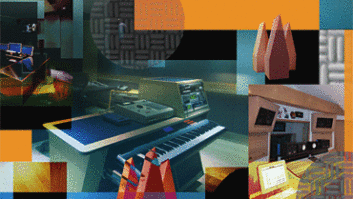It’s been years since I first saw a version of the “Great Lies of Rock and Roll,” yet I always get a chuckle from this anonymous document that has been faxed, posted and e-mailed millions of times. Filled with classics such as “This is one of Jimi’s old Strats,” “We’ll have a crew there to help you unload,” “It sounds great out front” and “You’re on the guest list,” the text includes some of the biggest whoppers since the invention of papyrus, when ancient Egyptians first uttered the phrase, “The check’s in the mail.”
Granted, the music biz can be wacky, but when musicians — and more than a few engineers — get involved in a science such as acoustics, misconceptions and misinformation can result. Sometimes, what starts out as solid science becomes contorted along the way, as is the case with the concept of near-field monitoring. It’s a well-known fact that when listening to speakers in the near-field (approximately a meter from the listener), the acoustical effects of the listening environment are substantially reduced. The key word here is reduced, but this is commonly misinterpreted to imply the room’s characteristics have no effect on the sound during close-in listening. I call this the “Near-Field Myth.”
Unfortunately, nothing is further from the truth, especially when the user is high-volume monitoring in the 10×10 or 10×12-foot confines of a typical project studio. In such situations, the room becomes a highly active — and reactive — component in the listening chain. Here, even the finest monitors become highly colored when mid- and LF energy bouncing off the room’s parallel surfaces combine with the speakers’ direct sound to create an environment that’s unpredictable, at best.
The first step to improve stereo or surround listening is to maintain reasonable levels during critical playbacks, tracking or mixing. As a side benefit, lower-level monitoring reduces ear fatigue and lets you work longer — either that day or in your career.
A second step is to experiment with monitor placement. The traditional console-top location for near-field speakers is not always the best. Stands behind the console often provide a better alternative. Tweeters should be at ear level, even if this means placing the monitors upside down. Also, minor variations in the downward angle of the speakers can make a considerable difference by reducing the amount of reflected sound bouncing off the console or worksurface. As for subs? Just remember that they’ll couple with adjacent floors, walls and corners.
The third step is treating your room with the appropriate materials that absorb, diffuse or otherwise redirect sounds to eliminate or decrease unwanted room reflections. As a general rule, breaking up parallel surfaces within the listening space will help. However, avoid the novice pitfall of over-dampening the room (covering the walls completely with carpet or foam), because this results in a space that’s overly absorptive in the highs, while having almost no effect on the longer-wavelength bass frequencies.
There’s plenty you can do to make your studio sound accurate, and hopefully as you peruse our annual studio design issue, you’ll find ways to experiment with placement, materials and plain ol’ listening. Armed with understanding, let’s defeat the near-field myth.





